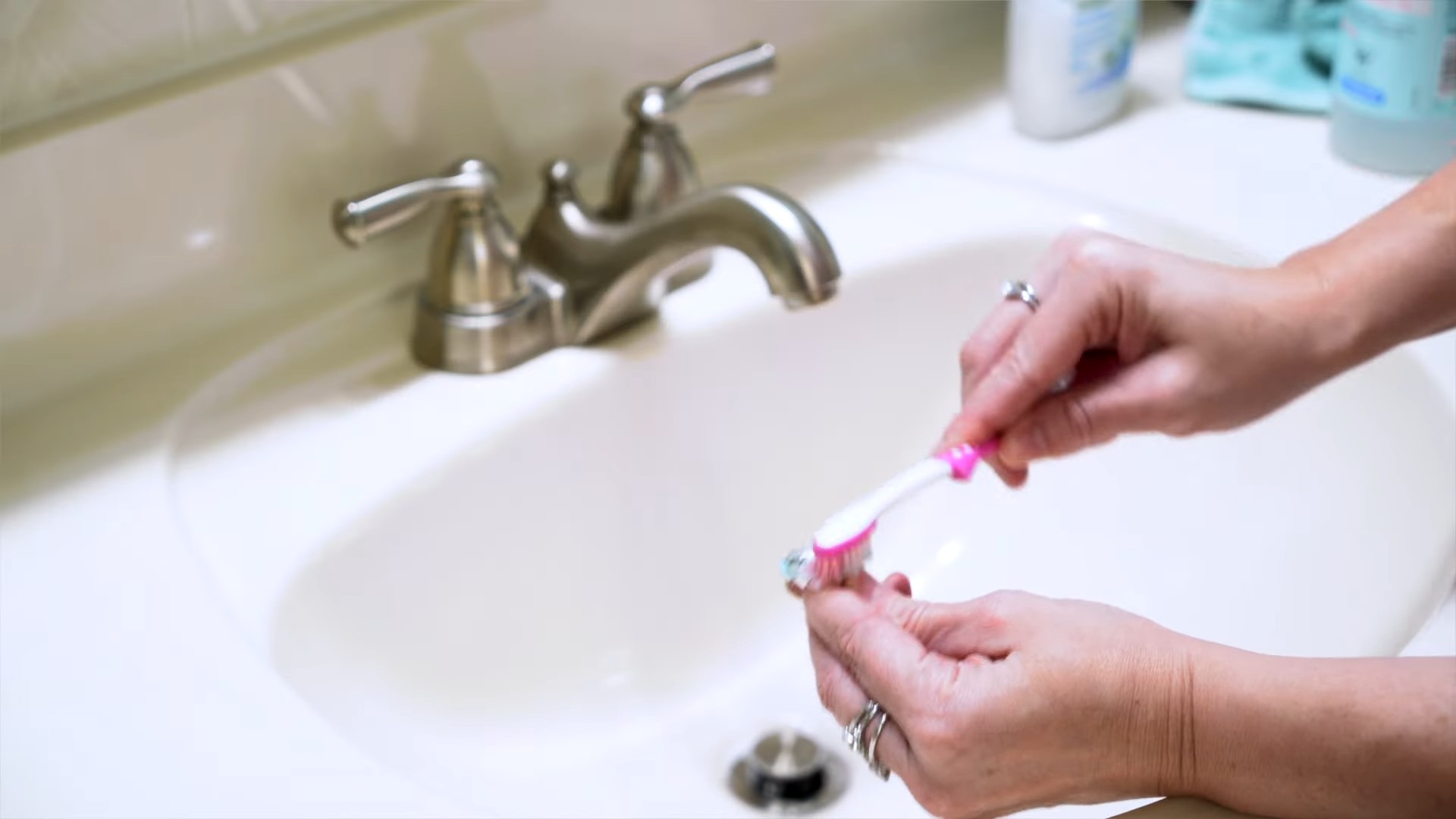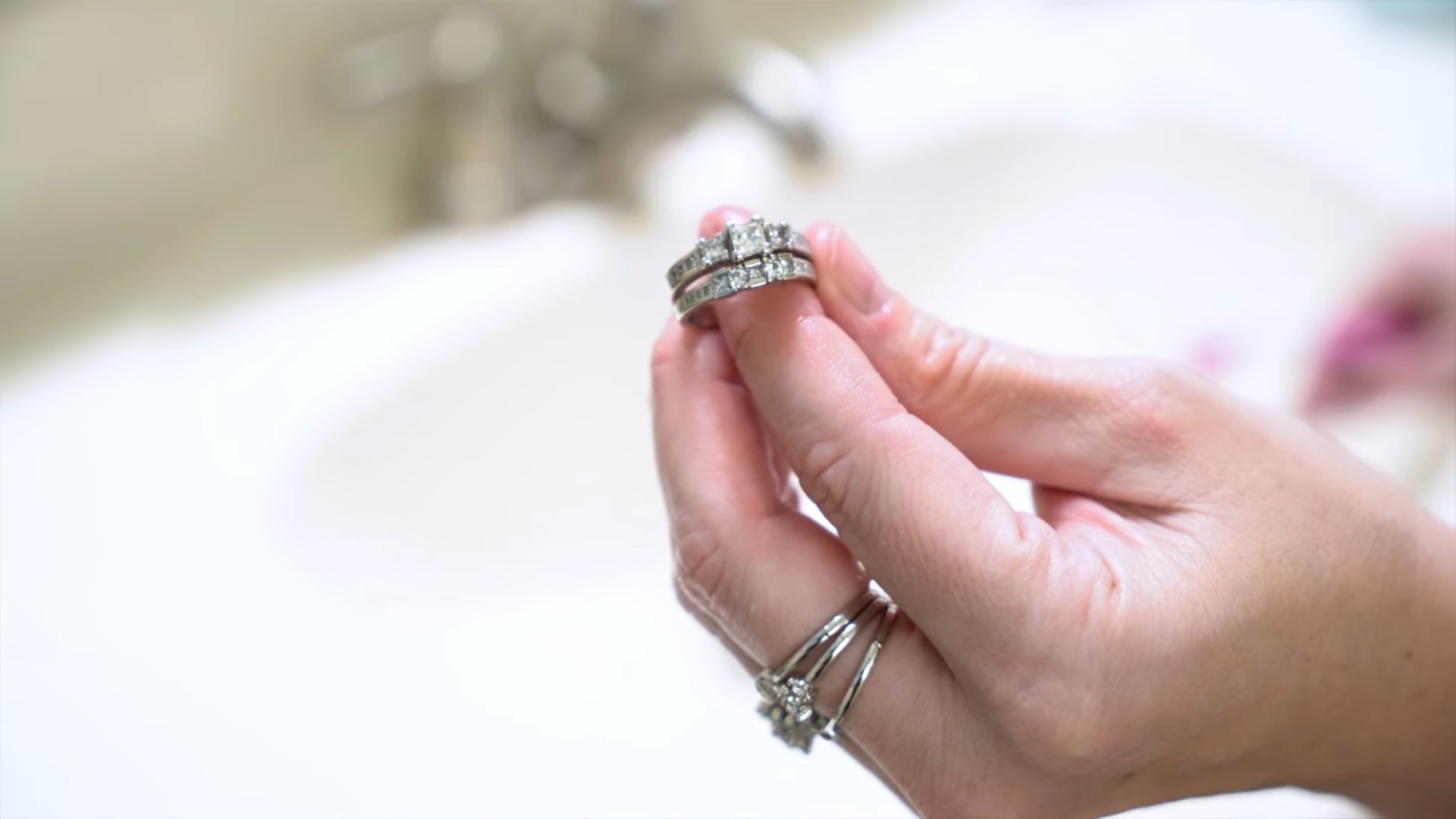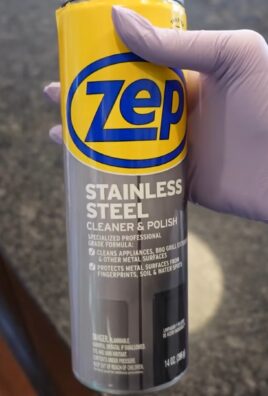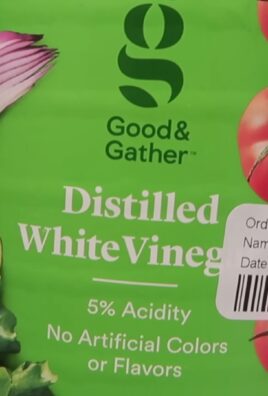Toothpaste cleaning hacks – who knew that the humble tube sitting on your bathroom sink could be your secret weapon for a sparkling home? I’m always on the lookout for clever DIY solutions, and let me tell you, I was blown away by the versatility of toothpaste! Forget spending a fortune on specialized cleaners; this article is packed with ingenious ways to use toothpaste to tackle everyday messes and restore shine to your belongings.
While we might think of toothpaste as a modern invention, its roots stretch back to ancient civilizations. Egyptians used a powder made from pumice and vinegar to clean their teeth, and the Romans favored crushed bones and oyster shells. Thankfully, our modern formulas are a bit more palatable (and effective!) and now, we’re discovering they’re not just for teeth anymore!
Let’s face it, cleaning can be a chore. We’re all busy, and sometimes those stubborn stains and tarnished surfaces feel impossible to conquer. That’s where these toothpaste cleaning hacks come in. I’m going to show you how to use this readily available product to remove scuffs, polish silver, and even clean your sneakers! These simple, budget-friendly tricks will save you time, money, and a whole lot of elbow grease. Get ready to unlock the cleaning power of toothpaste and transform your home!

DIY Cleaning Hacks with Toothpaste: Beyond Brushing Your Teeth!
Hey there, fellow DIY enthusiasts! I’m here to let you in on a little secret: toothpaste isn’t just for pearly whites. This humble tube of minty freshness is actually a surprisingly versatile cleaning agent, and I’m going to show you some of my favorite ways to use it around the house. Get ready to be amazed!
Why Toothpaste Works as a Cleaner
Before we dive into the hacks, let’s quickly understand why toothpaste is so effective. Most toothpastes contain mild abrasives, like hydrated silica, that gently scrub away stains and grime. They also have detergents and surfactants that help lift dirt and grease. Plus, the minty scent leaves everything smelling fresh and clean! Just remember to use *non-gel* toothpaste for most of these hacks, as the gel formulas aren’t as effective at scrubbing.
Cleaning Silverware and Jewelry
Tarnished silverware and jewelry can look dull and lifeless. But don’t worry, toothpaste can bring back their shine!
What you’ll need:
* Non-gel toothpaste
* Soft cloth or toothbrush
* Warm water
* Clean, dry cloth
Step-by-step instructions:
1. Apply a small amount of toothpaste: Squeeze a pea-sized amount of toothpaste onto a soft cloth or directly onto the tarnished silverware or jewelry.
2. Gently rub the toothpaste: Using the cloth or a soft-bristled toothbrush, gently rub the toothpaste onto the tarnished areas. Be careful not to apply too much pressure, especially on delicate jewelry, as you don’t want to scratch the surface. For silverware, focus on areas with heavy tarnish. For jewelry with intricate details, the toothbrush will help you reach those hard-to-clean spots.
3. Rinse thoroughly: Once you’ve rubbed the toothpaste over the tarnished areas, rinse the item thoroughly with warm water. Make sure to remove all traces of toothpaste.
4. Dry and buff: Use a clean, dry cloth to dry the silverware or jewelry completely. Then, buff the surface to restore its shine. You’ll be amazed at the difference!
Removing Water Stains from Wood Furniture
Those annoying white rings left by glasses on your wooden furniture? Toothpaste to the rescue!
What you’ll need:
* Non-gel toothpaste
* Soft cloth
* Damp cloth
* Dry cloth
Step-by-step instructions:
1. Apply toothpaste to the stain: Dab a small amount of non-gel toothpaste directly onto the water stain.
2. Gently rub in a circular motion: Using a soft cloth, gently rub the toothpaste into the stain in a circular motion. Be careful not to apply too much pressure, as you don’t want to damage the finish of the wood.
3. Wipe with a damp cloth: After rubbing for a minute or two, wipe the area with a damp cloth to remove the toothpaste residue.
4. Dry thoroughly: Use a clean, dry cloth to dry the area completely. If the stain is still visible, repeat the process.
Cleaning Bathroom Fixtures
Toothpaste can also be used to clean bathroom fixtures like faucets, showerheads, and sinks. It helps remove water spots, soap scum, and grime.
What you’ll need:
* Non-gel toothpaste
* Soft cloth or sponge
* Warm water
* Clean, dry cloth
Step-by-step instructions:
1. Apply toothpaste to the fixture: Squeeze a small amount of toothpaste onto a soft cloth or sponge.
2. Rub the fixture: Rub the toothpaste onto the bathroom fixture, focusing on areas with water spots, soap scum, or grime.
3. Rinse thoroughly: Rinse the fixture thoroughly with warm water to remove all traces of toothpaste.
4. Dry and polish: Use a clean, dry cloth to dry and polish the fixture. You’ll be left with sparkling clean fixtures!
Removing Scuff Marks from Shoes
Scuff marks on your favorite shoes? Don’t despair! Toothpaste can help remove them and restore your shoes to their former glory. This works best on leather or rubber shoes.
What you’ll need:
* Non-gel toothpaste
* Soft cloth or toothbrush
* Warm water
* Clean, dry cloth
Step-by-step instructions:
1. Apply toothpaste to the scuff mark: Apply a small amount of non-gel toothpaste directly onto the scuff mark.
2. Gently rub the scuff mark: Using a soft cloth or toothbrush, gently rub the toothpaste onto the scuff mark in a circular motion.
3. Wipe with a damp cloth: After rubbing for a minute or two, wipe the area with a damp cloth to remove the toothpaste residue.
4. Dry thoroughly: Use a clean, dry cloth to dry the area completely. Repeat if necessary for stubborn scuff marks.
Cleaning Your Iron
A dirty iron can leave marks on your clothes. Toothpaste can help clean the soleplate and remove any residue.
What you’ll need:
* Non-gel toothpaste
* Soft cloth
* Damp cloth
* Clean, dry cloth
Step-by-step instructions:
1. Make sure the iron is cool and unplugged: This is crucial for safety! Never attempt to clean a hot iron.
2. Apply toothpaste to the soleplate: Apply a thin layer of non-gel toothpaste to the soleplate of the iron, avoiding the steam vents.
3. Gently rub the soleplate: Using a soft cloth, gently rub the toothpaste onto the soleplate to remove any residue or buildup.
4. Wipe with a damp cloth: Wipe the soleplate with a damp cloth to remove the toothpaste residue.
5. Clean the steam vents: Use a cotton swab to clean any toothpaste residue from the steam vents.
6. Dry thoroughly: Use a clean, dry cloth to dry the soleplate completely before using the iron again.
Removing Crayon Marks from Walls
Kids and crayons… a classic combination that often leads to colorful walls! Toothpaste can help remove those unwanted masterpieces.
What you’ll need:
* Non-gel toothpaste
* Soft cloth
* Damp cloth
* Clean, dry cloth
Step-by-step instructions:
1. Apply toothpaste to the crayon marks: Apply a small amount of non-gel toothpaste directly onto the crayon marks.
2. Gently rub the crayon marks: Using a soft cloth, gently rub the toothpaste onto the crayon marks in a circular motion.
3. Wipe with a damp cloth: After rubbing for a minute or two, wipe the area with a damp cloth to remove the toothpaste residue and the crayon marks.
4. Dry thoroughly: Use a clean, dry cloth to dry the area completely. You might need to repeat the process for stubborn crayon marks. Be careful not to rub too hard, especially on painted walls, as you don’t want to remove the paint.
Defogging Bathroom Mirrors
Tired of foggy bathroom mirrors after a hot shower? Toothpaste can help prevent that!
What you’ll need:
* Non-gel toothpaste
* Soft cloth
* Damp cloth
* Clean, dry cloth
Step-by-step instructions:
1. Apply a thin layer of toothpaste to the mirror: Apply a very thin layer of non-gel toothpaste to the entire surface of the mirror.
2. Rub the toothpaste into the mirror: Using a soft cloth, rub the toothpaste into the mirror in a circular motion until it’s evenly distributed.
3. Wipe with a damp cloth: Wipe the mirror with a damp cloth to remove the toothpaste residue.
4. Dry thoroughly: Use a clean, dry cloth to dry the mirror completely. This will leave a thin film that prevents fogging. You’ll need to reapply the toothpaste every few weeks to maintain the defogging effect.
Cleaning Your Cell Phone Screen
Our cell phone screens are magnets for fingerprints and smudges. Toothpaste can help clean them and restore their clarity.
What you’ll need:
* Non-gel toothpaste
* Soft cloth (microfiber cloth is best)
* Damp cloth
* Clean, dry cloth
Step-by-step instructions:
1. Apply a tiny amount of toothpaste to the screen: Apply a *very* tiny amount of non-gel toothpaste to a soft cloth. You only need a pinhead-sized amount!
2. Gently rub the screen: Gently rub the cloth onto the screen in a circular motion. Be extremely careful not to apply too much pressure, as you don’t want to scratch the screen. Avoid getting toothpaste in any openings, like the speaker or charging port

Conclusion
So, there you have it! Unlocking the surprising power of toothpaste goes far beyond just oral hygiene. We’ve explored how this everyday essential can become your secret weapon for tackling a multitude of cleaning challenges around the house. From restoring the sparkle to your jewelry to banishing stubborn stains on your clothing, the versatility of toothpaste is truly remarkable.
Why is this DIY trick a must-try? Because it’s effective, affordable, and readily available. You likely already have a tube of toothpaste in your bathroom, making it a convenient solution for those unexpected cleaning emergencies. Plus, compared to harsh chemical cleaners, toothpaste is often a gentler alternative, especially on delicate surfaces. Think about the money you’ll save by avoiding specialized cleaning products for every little mishap!
But the best part? It’s incredibly satisfying to witness the transformation. Seeing your tarnished silver regain its luster or watching those scuff marks disappear from your shoes is a rewarding experience. It’s a testament to the power of simple solutions and a reminder that sometimes, the answer to our problems is right under our noses (or, in this case, in our bathrooms!).
Looking for variations? Consider using different types of toothpaste for specific tasks. For instance, a whitening toothpaste might be particularly effective on light-colored surfaces, while a gel toothpaste could be gentler on delicate materials. Experiment and see what works best for you! You can also combine toothpaste with other household ingredients like baking soda or vinegar for an extra cleaning boost. Just be sure to test any new concoction on a small, inconspicuous area first to avoid any unwanted reactions.
We wholeheartedly encourage you to give these **toothpaste cleaning hacks** a try. Don’t be afraid to experiment and discover new ways to harness the cleaning power of this humble product. And most importantly, we want to hear about your experiences! Share your before-and-after photos, your favorite toothpaste cleaning tips, and any variations you’ve discovered in the comments below. Let’s create a community of toothpaste cleaning enthusiasts and unlock even more hidden potential together! Your insights could help others discover a simpler, more affordable, and more effective way to keep their homes sparkling clean. So go ahead, grab that tube of toothpaste, and get ready to be amazed!
Frequently Asked Questions (FAQs)
1. What type of toothpaste is best for cleaning?
The best type of toothpaste for cleaning depends on the specific task. Generally, plain white toothpaste (not gel) is recommended for most cleaning purposes. Avoid using heavily abrasive toothpastes, especially on delicate surfaces, as they can cause scratches. Whitening toothpastes can be effective on light-colored surfaces but should be tested in an inconspicuous area first. Gel toothpastes are generally milder and suitable for more delicate items. Experiment to see what works best for your specific needs. Remember, a little goes a long way!
2. Can I use toothpaste to clean my teeth whitening trays?
Yes, you can use toothpaste to clean your teeth whitening trays. However, it’s crucial to use a non-abrasive toothpaste to avoid scratching the trays. Gently brush the trays with a soft-bristled toothbrush and toothpaste, then rinse thoroughly with cool water. Avoid using hot water, as it can warp the trays. Regular cleaning with toothpaste will help remove any residue and keep your trays fresh.
3. Is toothpaste safe to use on all surfaces?
No, toothpaste is not safe to use on all surfaces. Avoid using it on porous materials like unsealed wood or natural stone, as it can stain or damage them. Always test toothpaste on a small, inconspicuous area before applying it to a larger surface. Be particularly cautious when cleaning delicate materials like leather or painted surfaces. If in doubt, consult the manufacturer’s instructions or a professional cleaner.
4. How do I remove toothpaste residue after cleaning?
Removing toothpaste residue is usually quite simple. Just wipe the cleaned surface with a damp cloth or sponge. For stubborn residue, you can use a mild soap solution. Ensure you rinse the surface thoroughly with clean water and dry it with a soft cloth to prevent water spots.
5. Can I use toothpaste to remove scratches from my phone screen?
While some people claim that toothpaste can remove minor scratches from phone screens, it’s generally not recommended. Toothpaste can be abrasive and may actually worsen the scratches or damage the screen’s coating. There are specialized screen repair kits available that are designed to safely remove scratches from electronic devices. It’s always best to err on the side of caution when dealing with delicate electronics.
6. Does toothpaste expire?
Yes, toothpaste does have an expiration date. While it may not become harmful after the expiration date, its effectiveness may decrease. The fluoride content, which is crucial for preventing cavities, can degrade over time. It’s best to use toothpaste before its expiration date to ensure optimal oral hygiene and cleaning performance.
7. Can I use toothpaste to clean my car headlights?
Yes, toothpaste can be used to clean cloudy car headlights. The mild abrasives in toothpaste can help remove oxidation and grime, restoring clarity to the headlights. Apply a small amount of toothpaste to the headlights, rub it in using a circular motion with a soft cloth, and then rinse thoroughly with water. You may need to repeat the process a few times for heavily oxidized headlights.
8. What are some other unexpected uses for toothpaste?
Besides the cleaning hacks mentioned earlier, toothpaste can also be used to:
* Soothe minor burns and insect bites.
* Defog bathroom mirrors.
* Remove crayon marks from walls.
* Clean sneakers and white shoes.
* Polish chrome fixtures.
The possibilities are endless!
9. Is there any harm in swallowing toothpaste?
Swallowing small amounts of toothpaste during brushing is generally not harmful. However, swallowing large amounts of toothpaste, especially fluoride toothpaste, can cause stomach upset, nausea, and vomiting. It’s important to supervise children when they are brushing their teeth to ensure they don’t swallow excessive amounts of toothpaste. If a large amount of toothpaste is swallowed, contact a poison control center or seek medical attention.
10. How often should I use toothpaste for cleaning?
The frequency of using toothpaste for cleaning depends on the specific task and the surface being cleaned. For regular cleaning tasks like polishing silver or cleaning shoes, you can use toothpaste as needed. However, for more delicate surfaces, it’s best to use toothpaste sparingly and only when necessary. Always test in an inconspicuous area first and avoid over-cleaning, as this can damage the surface. Remember, moderation is key!




Leave a Comment